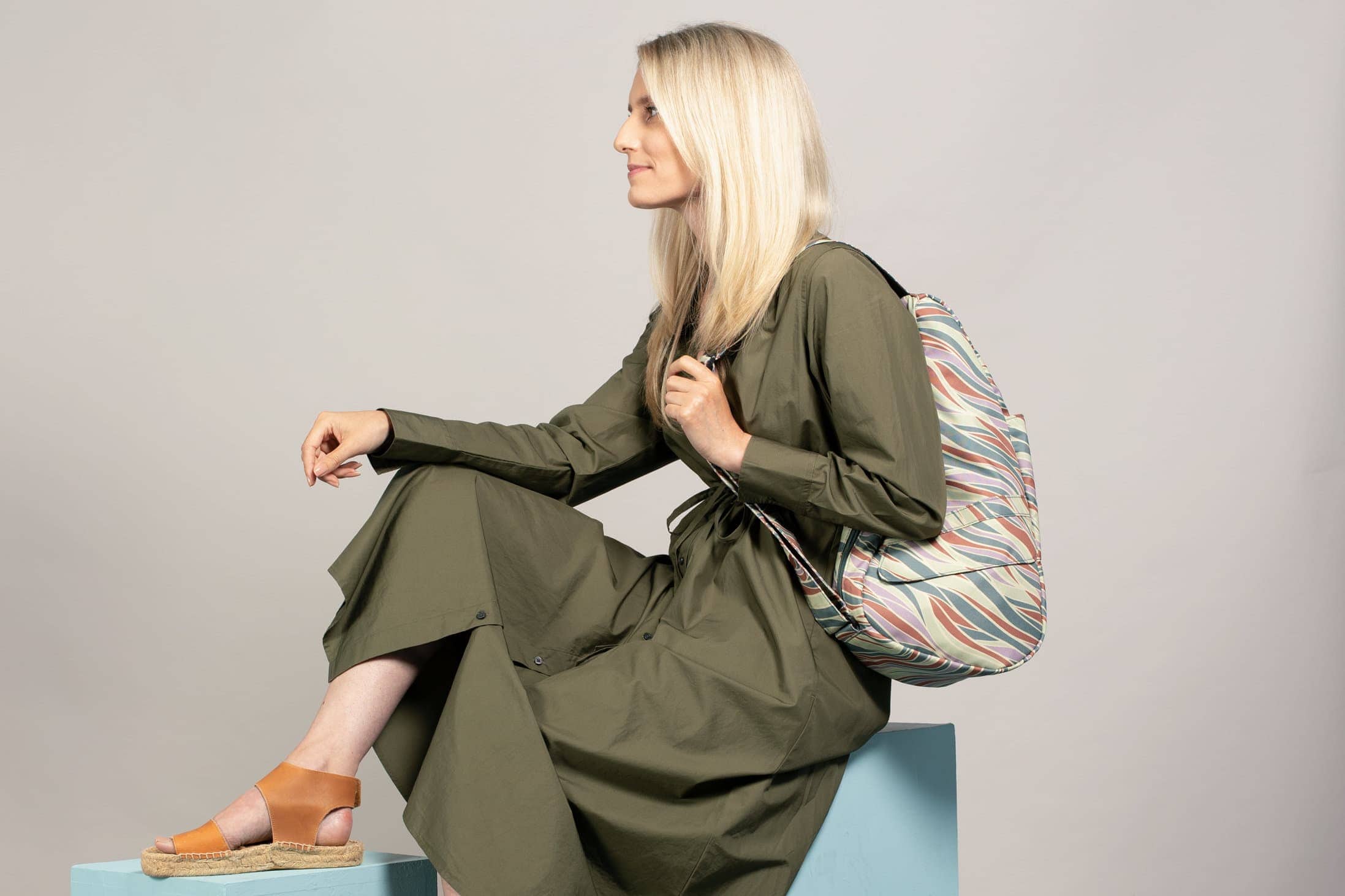Information Gathering
What’s the core reason for product photography? It’s to show the product you’re selling, right? So that the customer has a good idea of what they are buying online without the need to have physically seen the item in question. Fundamentally, what product photography is doing is providing visual information for the customer which they use to complement the textual information provided on the product description. You’re showing them what they’re going to buy.
The human brain processes visual information around three times faster than textual information and it’s the visual cortex at the rear of the human brain which processes this data sent from the optic nerve.
The brain is pre-programmed to handle visual data from birth – a new born baby, for example, understands the image of its mother long before it can understand the word ‘mother’ – but we have to learn how to process words. Therefore the use of imagery is a key driver on e-commerce websites as a customer can assimilate the images quickly and efficiently whilst picking up any hidden features via the descriptive text.
That said, bad imagery can be damaging and a serious turn off for potential customers. A fuzzy image or one which is too small can quickly leave the customer feeling frustrated, distrustful (see perception below) and disinterested.
If your product isn’t completely unique, the chances are they will turn on their heels and search for the item on another vendor’s site where they can get a better look at the item. Therefore it’s important to consider the quality of your product photography with respect to customer information gathering.
Here are some key criteria you should adhere to where possible;
- Use images of high enough resolution such that the overall details can be seen on first contact. Fuzzy images are a no-no.
- Provide a way to zoom into your images so that the customer can see specific details of the product. This can either be done via a click or hover zoom facility, or by providing individual close ups of specific product key points as separate images. If using a zoom you must ensure the image is of a high enough resolution.
- Provide multiple photographic angles of the product. The more of the product you can see the better. 3D rotational images are fantastic as they give the customer a real sense of proportions, but if that’s not an option, always provide at least front, side, top and rear angles of your product.
- If you’re selling products which have multiple variants such as colours, sizes, models etc., make sure you provide at least one shot of each variant. The last thing a customer wants is to order their new t-shirt in mint green only to find it’s more olive green when it arrives in the post.
Brand Perception

Building a respected and loved brand is hard work and more so if you’re in a competitive e-commerce market. You need to dig deep into your bag of digital marketing magic tricks just to stay ahead and how your customers perceive your brand and products is right at the tip of business success. You might have the best product in the world but if people don’t like your brand or worse still, don’t trust it, you’ll never get to where you want to be.
Product photography is critical to building strong brand perception and this works from the individual product angle shots, right up to your full bill-board marketing campaigns. Your brand will have a certain feel, a certain quality and even a specific tone of voice it uses in its customer facing communications. The best brands are able to portray the essence of this brand ethos even through a single product shot.
Apple are a typically good example of this. Their product shots are always on clean crisp white backgrounds, nothing else gets in the way of the product. No shadows, no gradients, no colours. This echoes the design and form of their products and is continued in their product packaging and even in their stores.
Here are some key criteria you should adhere to where possible;
- Keep your backgrounds consistent. Choose a style, be that a flat colour, gradient, in situ surroundings (grass, sand etc.) and stick with it every shot. Fix the camera and move the item, not the other way round. Batch post-processing can be important in this process.
- Keep your angles consistent for similar products. For example if you’re selling jewellery, make sure all your rings utilise the same angles such as, top, front, size and ¾.
- Keep your proportions consistent. If you’re selling t-shirts, make sure the images are all the same size within the frame. When products are shown on an index page (a grid), as they commonly are on e-commerce sites, having similar products in various sizes can seem jarring to the eye and may also pull the eye onto the larger products rather than give equal balance.
- Choose the right lighting. Some products should be shot in natural light. Outdoor equipment such as bicycles or hiking gear are best shot in the surroundings in which they are to be used. Where possible keep the white balance consistent. You want to avoid having some products appearing yellow while others appear blue.
I can’t stress enough how important it is to make use of a professional photographer or studio specialists such as our friends uShoot Studios in Islington. You might have a wonderful website but it can all be let down by bad ‘home-shot’ product photography. We have certainly had clients who have spent as much on photography as they have on their e-commerce website solution, and we consider that to be money well spent.
Social Media
A huge chunk of website traffic comes from social media activity and research has shown that audiences react more positively to attractive visual content than to well written copy. This is indicative of the success of platforms such as Instagram and Pinterest. A good image is notably more sharable than a block of text and can be easily propagated across platforms and when you consider many users of social media platforms do so on their mobile (see below), the use of high quality, considered photography really does have a big impact.
Mobile
It’s no big secret that more and more people access the Internet via their mobile devices; phones and tablets, especially while on the move. Mobile users typically have far less time to complete their online tasks and as such spend decreasing amounts of time surfing websites and digesting information. Here’s where the time old adage of ‘a picture tells a thousand words’ comes to the fore, as written content loses in the race to deliver key messages and enticing content ‘hooks’ onto an attention starved audience.
Your product photography needs to be punchy and enticing whilst telling a story about the product it’s depicting. Promotional product photography often builds a story around the item, setting it in a ‘live’ situation and portraying desirability and lifestyle; sexy lady on the beach in a bikini advertising sun glasses, a man in a super car with a beautiful girlfriend advertising anti-perspirant. These play on the lifestyle concept of ‘if I buy the product, I’ll get the lifestyle’ line of thinking. We buy into everything that surrounds the product, not just the product itself and it’s the photography which helps deliver this idea. You could write a complete 400 word back story but no one is going to have the time to read that on their mobile, so you need to find the right imagery to tell this story within a single image.
The Importance of Product Photography - Wrapping Up
Product photography provides a fast and effective way for your customers to gather information about a product, whilst giving you the opportunity to build brand perception and advocacy. Get it wrong and you’ll find all you do is push potential sales into the hands of your competitors.






